#behind the screen 1916
Text


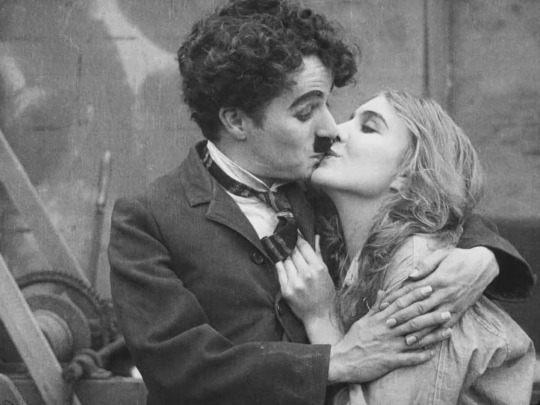

They’re so adorable
Charlie Chaplin and Edna Purviance in Behind the Screen (1916)
#charlie chaplin#edna purviance#behind the screen#behind the screen 1916#silent comedy#short film#old hollywood#romance#1910s movies#b&w#kiss
69 notes
·
View notes
Text

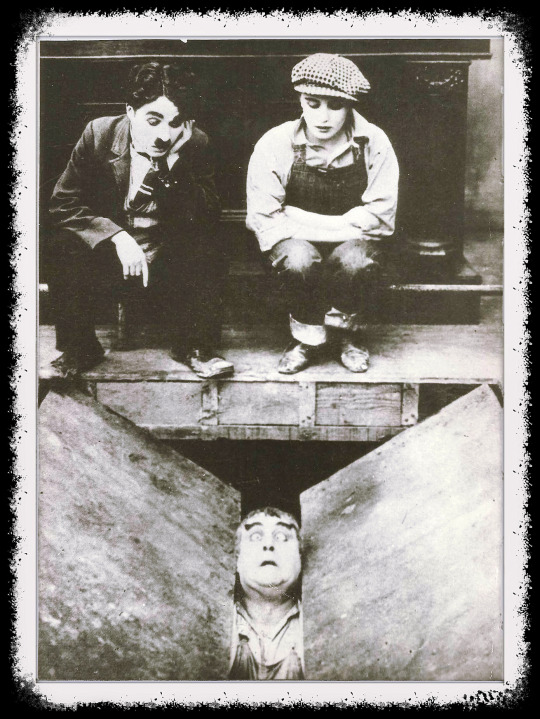
11 notes
·
View notes
Text
'Charlie Chaplin: The Mutual Comedies' – distilled comic genius on HBO Max and Criterion Channel and free on Kanopy
‘Charlie Chaplin: The Mutual Comedies’ – distilled comic genius on HBO Max and Criterion Channel and free on Kanopy
In 1914, a young British music hall comedian making a tour of the U.S. signed a contract to make his first movies with Keystone studios. Charlie Chaplin developed his Tramp persona working with slapstick specialist Mack Sennett for $150 a week and in less than a year was hired away by rival studio Essanay at $1250 a week and given control over his own pictures. His short comedies, which he also…

View On WordPress
#1916#1917#Behind the Screen#Charlie Chaplin#Criterion Channel#Easy Street#Edna Purviance#Eric Campbell#HBO Max#Kanopy#One A.M.#The Adventurer#The Count#The Cure#The Fireman#The Floorwalker#The Immigrant#The Pawnshop#The Rink#The Vagabond
0 notes
Photo

This 1916 home in Toledo, Ohio is one-of-a-kind. It even has a little porte coche, and the architecture is so unique. I think it’s a steal for $350K.

Isn’t this a beautiful porch? The home is impeccably maintained and restored.

The doors and tile have a Mediterranean flair.

The architectural details in this home are striking. The arched windows, and look at the fireplace. (I wouldn’t have blocked it w/a flat screen.)

Notice also the shape of the ceiling and arched wall behind the sofa.

What a lovely room- It has a big window w/a view of the porch.


In love with the kitchen. They painted the outdated cabinets gray, but by redoing some of the uppers in turquoise w/glass inserts and putting in a modern backsplash, they upgraded it, beautifully.

The everyday dining room has stucco walls w/niches, as well as a shiplap wall.

The great room is a wonderfully large family room/entertaining space. Notice the balcony on the upper left and the gorgeous fireplace.
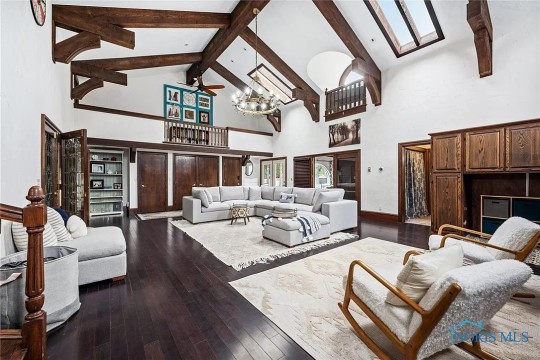
In addition to the balcony, there’s also a mezzanine.


The formal dining room is stunning. Leaded glass doors and a very unusual open ceiling.

Comfy sunroom makes the perfect TV room.

Stairs and hallway to the bds. and baths.


The main bd. and en suite.
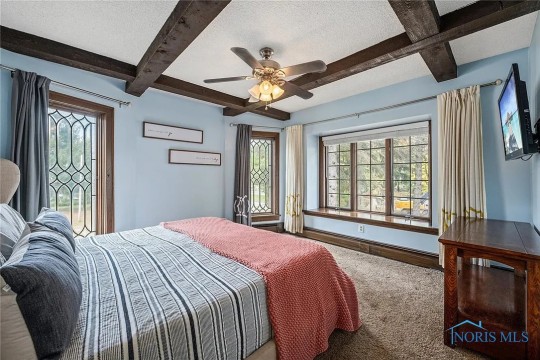

The home has 5 bds. and 5 baths. Isn’t this lovely? And, it has its own bath.

Look at how clever the closet area in this room is.
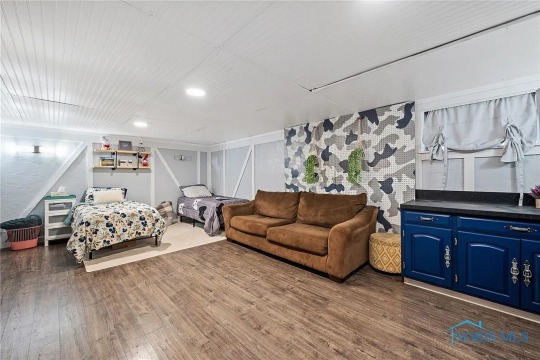
Very large room on the uppermost floor.

And, another bedroom in the basement.




A huge house, perfectly maintained, with lots of land for $350. A bargain.
https://www.zillow.com/homedetails/2333-Tremainsville-Rd-Toledo-OH-43613/34709663_zpid/
364 notes
·
View notes
Text


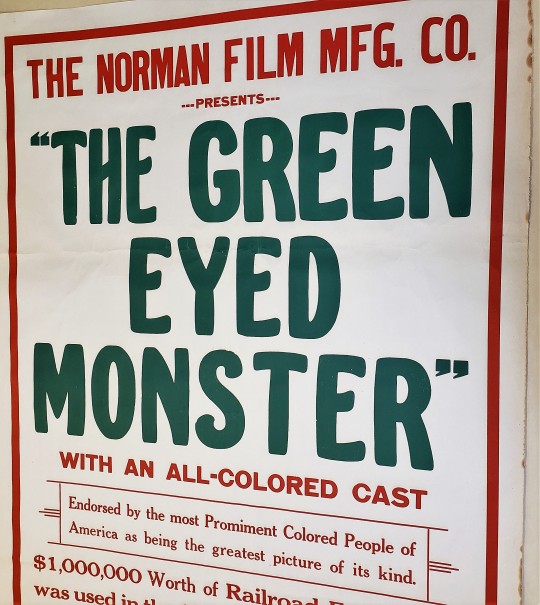
Black History Spotlight: The original movie poster for The Green-Eyed Monster
Last year, Special Collections and Archives at the University of Iowa Libraries acquired items to form a new collection: the Black Film and Television Collection. In honor of Black History Month, we’re shining a spotlight on a different item from this collection. This week, we’re taking a look at one of the collection’s earliest (and rarest) items: the original poster for the 1919 film The Green-Eyed Monster.
The Library of Congress estimates that 75% of all silent films have been lost, and that number unfortunately includes many of the first films made for Black audiences. The Green-Eyed Monster is one such film. Since we don’t have access to the movie itself, marketing materials like this poster offer a vital glimpse into a formative period of cinematic history and a history that was very nearly lost. Amid a culture of violent racism, systemic inequality, and segregation, Black artists behind and in front of the camera offered their audiences a look at the possibilities ahead.
During the era of segregation, Black audiences were already barred from most movie showings, and there were only a few movie houses open specifically for Black viewers. To see movies like The Green-Eyed Monster, they would have had to attend separate, late-night screenings called “midnight rambles.” But attend they did—there was a demand for what came to be called “race films,” and about 500 movies were released to meet it. During the daytime, theaters might show movies like the notoriously racist Birth of a Nation, but at the stroke of midnight, Black audiences could gather to appreciate Black artistry.
Where does The Green-Eyed Monster fit in?
The Green-Eyed Monster was produced by Norman Studios in Jacksonville, Florida. And while the film featured an all-Black cast, the studio that produced it was owned by a white filmmaker, Richard E. Norman, who sought to cater to an untapped audience. To make his first race film, Norman retooled the script for one of his previous films, The Wrecker, and hired Black actors for the roles. Norman Studios would go on to produce seven more feature-length films with all-Black casts, but the studio died out during the rocky transition to “talkies.”
So what exactly was The Green-Eyed Monster about? While the film itself is lost, the broad strokes of the story remain. As the title indicates, the plot revolves around jealousy, both romantic and professional. Two friends who work for rival rail companies end up falling for the same woman—and competing for the same lucrative contract. To settle both conflicts, these friends stake everything on a race on rails. Given that the poster aims to entice audiences with an “$80,000.00 train wreck,” it’s safe to assume that in this case, the track to true love is a perilous one.
While this poster and the film it advertises represent a form of progress, the most impactful works in the genre of race film were produced by Black filmmakers at Black-owned studios.
Lincoln Studios and Oscar Micheaux
In the early years of cinema, the industry wasn’t centralized in Los Angeles the way it is today, and production companies could be found in cities across the country. One such studio was Lincoln Motion Picture Company, which began in Lincoln, Nebraska, in 1916 and lasted until 1921. Its founders were brothers, Noble Johnson and George Perry Johnson, and their 1916 debut was the first-ever race film, The Realization of a Negro’s Ambition. This is widely credited as the first film ever to portray the experience of middle-class Black characters. Its story is as aspirational as its title: a dreamer strikes out to make it in the oil business, excels, and returns to his family a wealthy man.
The same segregation policies that led to the phenomenon of midnight rambles made it especially difficult for a production company aimed at a Black audience to maintain its bottom line. Again, that’s not because these films lacked an interested viewership; their distribution was limited by the racist policies of the time, and so were their profits. While Lincoln was a short-lived venture, its impact can’t be overstated. By the time the studio that originated race films closed down, another Black leader had found his calling in film.
Oscar Micheaux’s Chicago studio, Micheaux Film Corporation, was one such company. Throughout his decades-long career, Micheaux produced 40 films. His features showed Black audiences a world they recognized: a place of struggle and striving, where racism was a constant reality. He also wrote Black characters they could identify with, fully human in contrast to the caricatures in white films of the time.
There are so many other stories to be found in the Black Film and Television Collection. Next week, we’ll dive deeper into Micheaux, his Midwestern connections, and the continued rise of race films in the first half of the twentieth century.
--Natalee Dawson, Communication Coordinator at UIowa Libraries with assistance from Liz Riordan, Anne Bassett, and Jerome Kirby
#university of iowa#special collections#film#silent film#black history matters#black history month#black film#libraries#Norman Films Co#green eyed monster
85 notes
·
View notes
Text
finding footing in art & nature🦋🌿
This week’s post is about the interpretation of nature through art – I’ll be focusing less on how I interpret nature through art, and more about how I have come to find my footing in doing so.
A quotation from chapter 3 of the textbook (Beck, Cable, & Knudson, 2018) really struck a chord with me for this topic. Talking about studying nature in schools, Burroughs (1916) said that it was:
“Too cold, too special, too mechanical; it is likely to rub the bloom off Nature. It lacks soul and emotion. It misses the accessories of the open air and its exhilarations, the sky, the clouds, the landscape, and the currents of life that pulse everywhere.”
I feel that many of us can relate to this excerpt, as did I. Rub the bloom off Nature.
It sounds silly, and I still sometimes feels pretty embarrassed by it, but I really feel like the driving force behind my choice of major (Zoology) was nature documentaries, photography, and Diane Fossey and Jane Goodall’s stories. The images on a TV screen of people out in the wild, so intimately and genuinely immersed in the beauties and intricacies of nature – that is what drove it home for me.

I can’t honestly say that I was thinking - primarily - about learning the ins and outs of statistical methods. Nor was I considering the how-to’s of data acquisition and manipulation, or even hypothesis formulating.
Realistically, I was thinking about how cool it would be to study a major that was defined by natural historians and explorers like Charles Darwin, or the people I saw on Nat Geo programs.
So… who am I to interpret nature through art? I’m someone in a (to some, surprisingly) technical, scientific major. Someone who didn’t necessarily know what they were signing up for, who was (naively) hoping for an experience akin to these creative interpretations. But I’m someone who has come to love these studies because they’ve immensely deepened the connection I’ve always felt to the beauty of nature. When I see a scenic landscape shot or a charming illustration of anything wild, I have so much more in my interpretive toolset than I ever did before. I can parse through the dramatic editing and enhanced colours to find a deeper meaning, one that is simultaneously more informed and more abstract.
The bloom may have been rubbed off a little, but now I can take steps to paint it back on.
Of course, this need not apply to members of the audience. As the hopeful interpreter, I’m fortunate to have this science + art lens, and it is indeed my responsibility to translate that dual perspective into a single, coherent, and cohesive one.
And how do I interpret the gift of beauty? Through that dual perspective.
One of Tilden’s (1957) Principles of Interpretation is that
“the chief aim of interpretation is not instruction, but provocation”
Philosophers have made attempts through millennia to articulate the importance of beauty. One particularly ephemeral type of beauty has been described as “the sublime”. Crudely, it has to do with the almost agonizing appreciation we feel when we see a mountainscape, the ocean, a sprawling forest – something naturally beautiful, perhaps chaotic, immense (notice that most philosophers can’t help but define it in terms of NATURAL beauty).
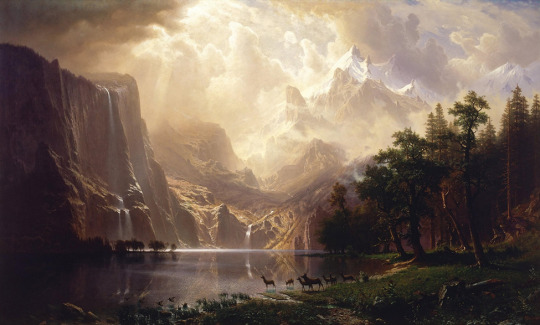
[ Among the Sierra Nevada, California (1868), Albert Bierstadt. ]
Part of the gift of beauty is in its interpretation; the self-reflection that compels us to ask
why is this sight making me feel this way??? and HOW?
Combining that stand-alone beauty with technical knowledge is a simple step we take after being inexplicably provoked by nature. A step towards appreciating, defining, putting our finger on the gorgeous gift that Mother Nature is, and then making our own creations to try to capture that beauty – kind of like how a painter might study a renowned artist by recreating their work. In this way, we gain some insight into how Mother Nature put all these elements together to make a creation so breathtaking.
---
References
Beck, L., Cable, T. T., & Knudson, D. M. (2018). Interpreting Cultural and Natural Heritage for a Better World. Sagamore Publishing.
Burroughs, J. (1916). Under the apple trees. New York, NY: William H. Wise & Co.
Tilden, F. (1957). Interpreting our heritage. Chapel Hill, NC: University of North Carolina Press.
2 notes
·
View notes
Text
While not techniqually the same thing I've been researching early queer cinema and here are two early depictions of female drag. Its really interesting to see how a different generation codified things like masculine and feminine dress and how there perception of butchness is different from ours today.
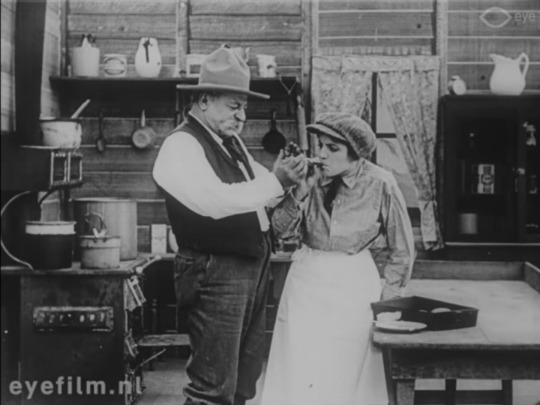
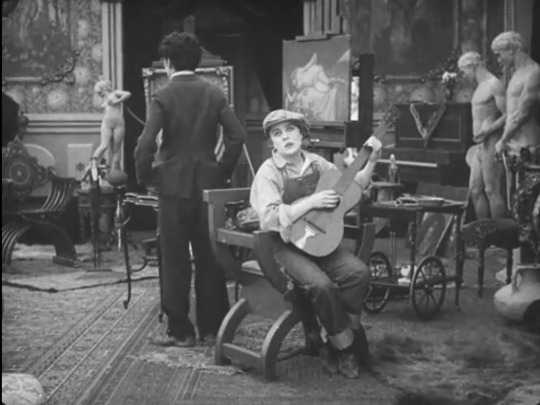
Louise Glaum in "Making a Man Out of Her"(1912) | Edna Purvience in "Behind the Screen" (1916)
2 notes
·
View notes
Text

Tankiste on Gas Alert - M2
This is an impression of a French tank crewman on gas alert, equipped with an M2 gas mask. One may see this style of uniform on tankiste in a sector that has had threats of a gas attack, or in their tank if a gas attack has begun if the wearer was unable to don the primary ARS mask. In addition to the standard gas mask training the soldiers would receive during the war, the tank crews would also be given gas mask training specific to vehicles. This required tank crews to be able to successfully put on their M2 gas mask in under 20 seconds with their eyes closed and while holding their breath inside the tank. The new ARS gas mask requirements in 1918 would bring this down to only seven to eight seconds. Tank interiors were 'open air' as vision slits were direct vision with no protection, so tank crews were at risk of becoming a casualty to gas attacks. Per the combat history of the tank regiments, fighting in the tank during a gas attack while wearing gas masks was not uncommon.
The gas mask highlighted here is the M2, the most common gas mask of the Great War with over 29,300,000 examples produced in total. This gas mask would be developed by Graveraux with inspiration taken from General Pétain's 2nd Army gas mask they had been designing independently. Thus, the production mask would be officially named M2 (literally Mask of the 2nd Army) and adopted on December 6th, 1915. The gas mask consists of two pieces of gauze sewn together and impregnated with gas neutralizing chemicals. The variant pictured here is the Masque M2B Modèle 1916. The mask is secured to the wearer by two elastic straps fixed to the upper corners of the mask positioned behind and above the head, adjusted by a safety pin. The M2B variant would see the addition of another elastic band that would wrap about the back of the neck for additional security. A larger strap made it possible to wear the mask around the neck in a waiting position. A waterproofed canvas bag and tin case was provided for soldiers to store the mask when not in use. Inside the waterproof canvas bag was a pocket for spare lenses in case the ones on the mask broke. Additionally, a soldier may carry cotton balls as it was instructed to place them in one's ears if the ear drums have been ruptured and there was gas present on the battlefield.
The masks were distributed in three sizes, this example being the regular size. Sizing was stamped on the canvas bag and on the underside of the waterproof screen on the mask itself. The sheer amount of M2 gas masks produced means there is a myriad of different variants between manufacturers, including waterproof canvas bags and tins.
The second display photo shows the tankiste wearing a 1918 Spanish Flu mask (just a nice example of one here) while the Masque M2B Modèle 1916 is stowed in the alert or waiting position. This position was done if there was a known threat of an imminent gas attack or in a frontline sector where gas attacks were commonplace. Sometimes the mask itself would be placed outside the waterproof canvas bag; however, leaving the mask exposed to the elements tends to decrease the effectiveness of the neutralizing chemicals. It was practice to place the gas mask large strap and the strap on the waterproof canvas bag around the neck and keep the M2 inside the canvas bag. When there was no threat of a gas attack both the canvas bag and M2 were placed in the tin case on the belt. Keeping the M2 inside both the canvas bag and inside the tin case allowed for the neutralizing chemicals to stay effective for extended periods of time.
The main display photo shows the tankiste wearing the M2 in the protective position. By late 1918, tank crews would be issued the ARS gas mask which was the new primary mask of the French Army. The M2 mask would be placed into a secondary role and worn in tandem with the ARS gas mask and donned in the event that the ARS gas mask became damaged. The M2 gave full protection from chlorine gas and phosgene gas for up to five hours before the neutralizing chemicals had to be replenished. The summarized regulation method of putting the mask on is as follows:
1 - From the alert position, slide helmet to back of head with the helmet strap placed at the neck.
2 - Remove M2 from canvas bag and secure to head, adjusting accordingly. The canvas bag should drop out of the way naturally as its strap is much longer than the neck strap on the M2, no longer being held up by the M2 strap at the neck.
3 - Ensure the mask is properly sealed on the face, feeling for any gaps on the sides.
4 - Place helmet back on top of head.
If the M2 was in the tin case, then it would have to be taken out then placed around the neck before the above steps can be taken. This whole maneuver should take less than 20 seconds. It may also have to be performed with eyes closed and breath held depending on how close the gas is. Regardless, the tankiste were sufficiently trained in putting on their masks both inside and outside their tank.
#history#tanks#renault ft#world war one#technology#reenactor#uniforms#reenacting#reenactment#reenactors#uniform#gas mask#tactical gear
1 note
·
View note
Text
"Anyone may gauge the bitterness of the recent campaign if he remembers the abuse heaped on the anti-suffragists by the President of the National Suffrage Association; and we must judge every movement by its leaders. Dr. Anna Howard Shaw, at a hearing before the Senate Committee at Washington, said: 'We are not afraid of the body of women who are going up and down the land opposing suffrage. They are just enough in number so that by holding out their skirts they can make a screen for the men operating dens of vice and iniquity and prostitution to hide behind.' In an interview printed in the New York Sun, Dr. Shaw referred to the anti-suffrage leaders as 'vultures looking for carrion.'"
-Alice R. Allen
From "Woman Suffrage vs. Womanliness" in Anti-Suffrage Essays by Massachusetts Women, 1916
0 notes
Text

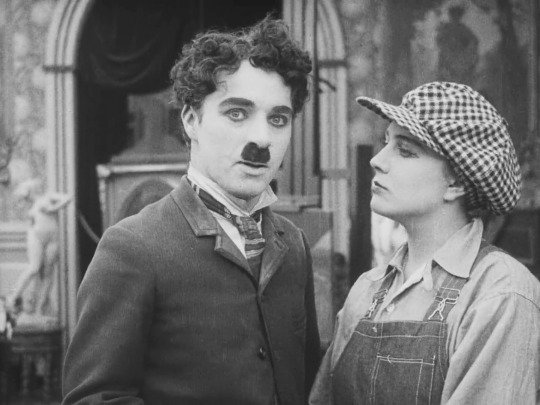
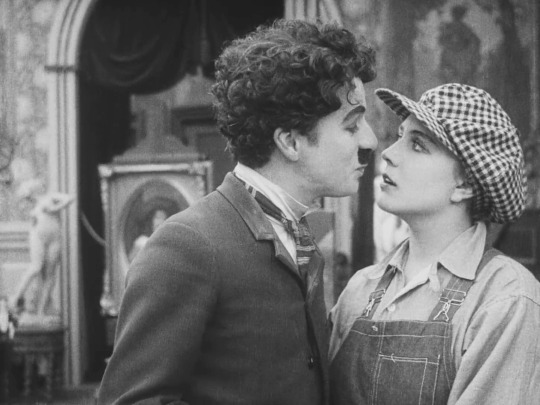
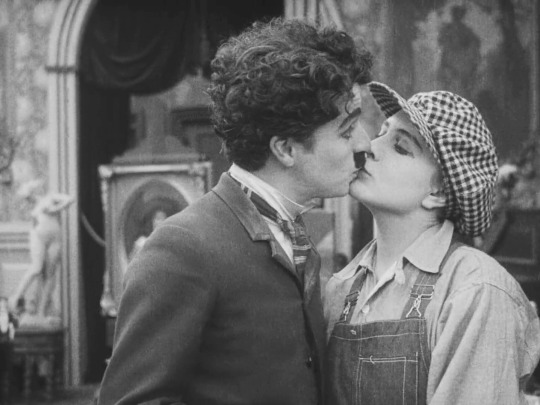

Charlie Chaplin and Edna Purviance in Behind the Screen (1916)
#charlie chaplin#edna purviance#old hollywood#behind the screen#behind the screen 1916#silent film#short film#comedy#romance#1910s movies#b&w#kiss
30 notes
·
View notes
Text

"Behind the Screen" 1916
13 notes
·
View notes
Text

Charles Chaplin and Edna Purviance in Behind the Screen (1916)
0 notes
Photo
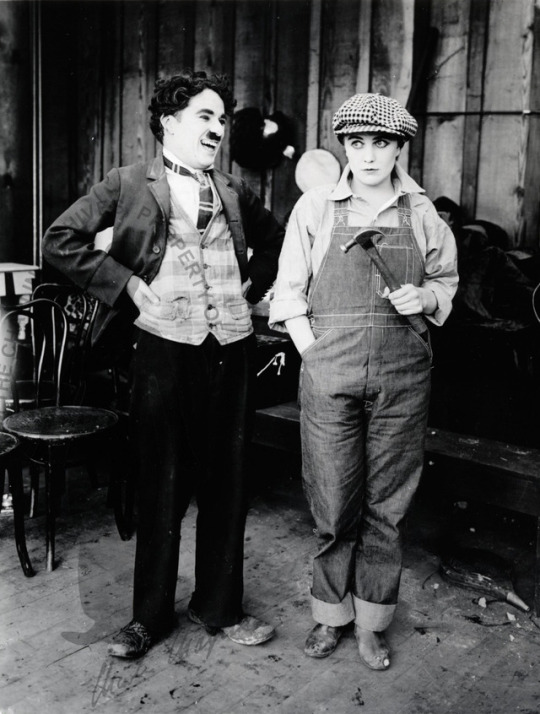
Charlie Chaplin & Edna Purviance “Behind the Screen” 1916
28 notes
·
View notes
Link
Charlie Chaplin - Behind the Screen (1916) - color (Laurel
0 notes
Photo

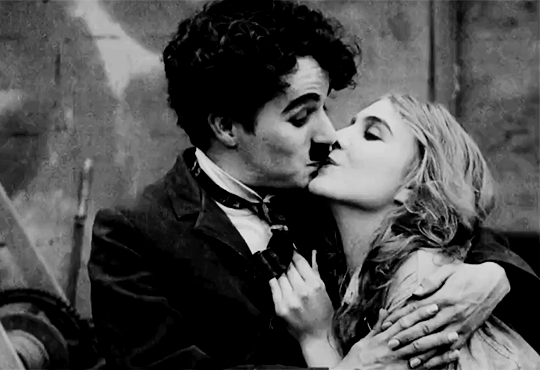

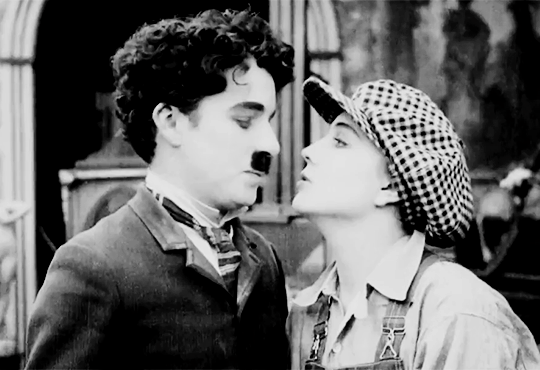
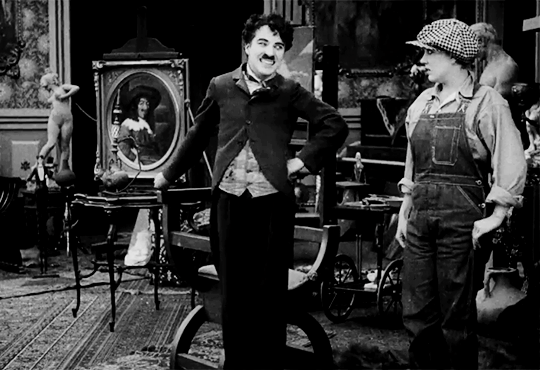
CHARLIE CHAPLIN and EDNA PURVIANCE in "BEHIND THE SCREEN"(1916)
187 notes
·
View notes
Text
Rebuilding Family
Summary: Y/N and Spencer were college sweethearts at Cal-Tech but once Spencer got accepted to the FBI Academy, he ended things deciding it was not fair to make Y/N wait for him. When they meet again years later, he discovers something unexpected.
Pairing: Spencer Reid x Fem!Reader
Warning: mentions of a bear attack (NOTHING HAPPENS, just spencer stating statistics, i just wanted to label anything that i think could potentially trigger someone. if you ever think i’m missing a tw, please let me know!)
Masterlist
Chapter 25
Spencer carried a sleepy Jo up to her bed the night after the wedding.
“Daddy?” she asked softly as Spencer tucked her in.
“Yes, Princess?” he replied.
“Does this mean you’re the king now?” Jo questioned.
Spencer furrowed his brow.
“Of Caltechia. You said Mommy was the Queen and I’m the Princess,” Jo stated.
Spencer grinned, “Was I that obvious? Yes, I guess I am but the Queen is still in charge.”
“Okay, night, Daddy,” she turned on to her side, snuggling into her stuffed dinosaur.
“Rest up, Princess. We have a very exciting week starting tomorrow,” Spencer kissed her forehead before exiting the room.
-
You loaded the cooler into the back of your car.
“Okay, cooler, check! Tent, check! Sleeping bags, check! Pillow, check! First aid kit, check!” you continued to cross off the items on your list.
“Marshmallows, check!” Jo ran out of the house with a huge bag of marshmallows as Spencer locked the door behind her.
“Oh my god, thank you, baby. I almost forgot them on the counter. Those would be some pretty pathetic s’mores without marshmallows,” you smiled.
“Thank god, your parents still had all of this old camping stuff,” Spencer loaded his bag into the back.
“Oh, we used to go all the time when we were kids. I always wanted to bring Jo but never got around to it until now,” you smiled.
“Well, what are we waiting for?” Spencer grinned, getting into the driver’s side as you buckled Jo in the back.
You were camping in Acadia National Park in Maine just like you did as a kid. It was about a twelve hour drive but you and Spencer would take shifts and Jo had plenty of books and coloring to keep her entertained for the ride.
-
“Oh my gosh,” you gasped, “It’s just like I remember it.”
You had managed to make the trip in one day since you left very early in the morning. You were arriving just a little before dusk.
The ranger informed you of your campsite number and the rules before setting you on your way.
“Tent first before it gets dark, please!” you called out to Jo and Spencer who were already eating marshmallows from the bag.
Spencer had swapped out his normal dress shirts and khakis for a fleece flannel and jeans and you had to admit, he looked so cute.
Luckily, the tent went up easily and you started to collect wood for a fire.
“Jo!” Spencer called out, “I need to show you something first before you go out into the woods with Mommy.”
Spencer pulled out a plant guide from his backpack and pointed to a picture.
“See this one? This is poison ivy. Please stay away from it. It contains an oil called urushiol that will give you an itchy rash. Me and Mommy packed the ointment for it but try your best to steer clear, Princess,” he explained to her.
“Aye aye, captain,” Jo ran off in your direction to help collect sticks as Spencer prepped the fire pit.
You, Spencer, and Jo were cuddled up all together, wrapped in a blanket, in front of the fire.
You all were toasting another round of marshmallows for your second s’mores of the evening.
You turned to look at Spencer when you noticed the sticky marshmallow residue around his lips.
“You’ve got a little something there,” you giggled, “Don’t worry, love. I’ve got it,” you put your lips up to his mouth and licked the sweetness away before giving him a quick peck.
“All better,” you smiled.
Spencer was shaking his head at you, grinning.
-
You woke up to various grunts and snorts coming from outside your tent in the middle of the night.
“Spence!” you whisper-shouted, aggressively nudging him awake.
“Stay calm but I think there’s a bear outside our tent,” you whispered into his ear.
His eyes shot open, “But we locked all the food in the car though just like the ranger said.”
“He is probably just smelling leftover crumbs. We should be fine. This has happened to my family before,” you explained.
“Y/N! There are an average of 40 bear attacks around the world every year,” Spencer whispered back, pulling Jo out of her sleeping bag and close to his chest.
“But it’s the least dangerous type of bear, Spence. Black bears only resort to violence if you threaten them and I don’t know about you but I’m not about to go out there and pick a fight,” you said.
“Okay, you can go back to bed. I’ll keep watch until the coast is clear,” he whispered.
“No, I’ll stay up too,” you leaned your head against his shoulder, “I just hope Jo doesn’t get up.”
-
The bear wandered off about 10 minutes later that night and you and Spencer both went back to sleep. You didn’t mention it to Jo in the morning because you didn’t know if she would be fascinated or terrified.
You had those little mini boxes of cereal for breakfast before Jo was bouncing up and down, ready to go on a hike.
After you all laced up your hiking boots and packed plenty of trail mix with extra M&M’s for the walk, you began your little scenic journey.
“Take it away, Spence,” you smiled.
“Acadia includes about 49,000 acres of land. It was originally established in 1916 by President Woodrow Wilson. There are 26 mountains and we are hiking up one of them today. There are over 300 species of birds and 50 mammal species in Acadia,” Spencer stated as you and him swung Jo’s arms in between you both.
You walked about a mile on the trail before you put your arm out, stopping Jo and Spencer in their tracks.
“Bunnies,” you whispered and pointed to a few bunnies nibbling on some grass under a pine tree.
“Those are snowshoe hares,” Spencer crouched down to Jo’s level.
“Aren’t they supposed to be white?” you asked.
“They have shed their white winter coat and are now in their brown summer coat to better blend in with the environment,” Spencer explained.
“They look so cute with their little noses,” Jo mimicked the bunnies by scrunching her nose up and down repeatedly.
-
Swoosh. Ding.
Penelope had just finished presenting a case to the team when an inbox notification popped up.
“What is Reid emailing you?” Derek asked curiously.
“He emailed all of us,” Penelope smiled, pressing the remote back on to share her screen.
Hi all,
Minus a brief bear scare (that I definitely was not afraid about), we are having lots of fun and s’mores! I didn’t think I’d ever enjoy camping but I was proven wrong.
Sending our love,
The Reids
Attachment: 1 Image
The photo was of Jo on Spencer’s shoulders and you hugging him from the side as you all stood in front of a waterfall.
“My heart can’t take this cuteness!” Penelope clutched her chest dramatically.
A/N: i am actually planning a camping trip with a few of my friends this summer so this chapter is very near and dear to my heart
#dad!spencer#spencer reid fluff#spencer reid x you#spencer reid x reader#spencer reid fanfiction#spencer x reader#reid x reader#spencer reid
254 notes
·
View notes